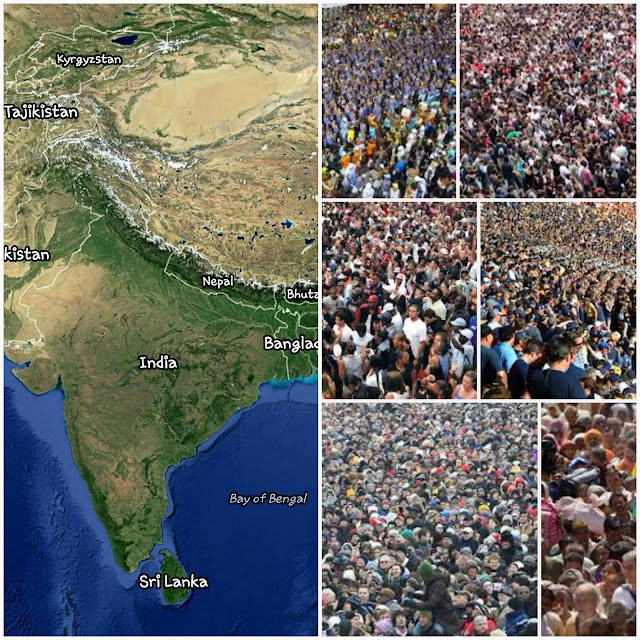With a growing population that is faster than any other country in the world, India will be the world's most populous country in the world. It will overtake China's population by 2021 or 2022, which is just five years from now. This is earlier than the forecasted year for India to overtake that of China's population for the next 10 to 20 years. India's booming population will be a worldwide trend during this year that will be the main focus by mass media networks from around the globe.
India is currently the world's second most populous country in the world with at least 1.36 billion population as of 2015. China is currently the world's most populous country with a whopping population of 1.25 billion as of 2015. By 2021 or 2022, These two countries will balloon into 1.4 billion. India will likely to further expand that will overtake China's population in that year, which makes it the world's populated country in the world, just a few millions more than that of China's.
 |
| India is set to be the world's largest population in 2022 |
By 2050, India's population will soon reach 1.8 billion, which will make it a concerning issue to the nation. China will also follow India's population boom as the country was granted by the government to have a two child policy, making it a potential for the country to accelerate its population growth for the next two decades.
The predicted number of population for the top ten countries causes a concern because most countries with an explosive population growth belong to the developing world. This means that the ratio of population with the human developing index does not compensate with each other. Results will show that rising population among the developing countries will cause a new problem with the country's socio-economic lifestyle as well as livelihood projects in the future.
At the present, both India and China are already addressing problems with the growing problems on narrowing the wage gap. There is a significant number of population that can further who belong to the poverty line. Growing population could risk more residents to fall under poverty. Transportation and infrastructure development is also a concern because a large number of population can no longer be accommodated by the existing facilities.
Following India's population with the fastest growing rates are Nigeria, Democratic Republic of Congo, Ethiopia, and Indonesia that will soon occupy the top 5 spots in the next 30 years. These are all countries that belong to the developing world status.
Lack of family planning laws and implementation of existing laws are the key factors that cause several socio-economic problems applied in countries with the largest populations. Authorities are having a hard time controlling the population's lifestyle and livelihood activities because the number of government officials, as well as implementing agencies, are not that visible and efficient for promulgating existing laws.
As for the case of India, we can see that the railway transportation is a problem because there are millions of travelers that can be documented on a daily basis. The overwhelming number of population in that country makes it harder for commuters to travel because there are lesser transportation facilities as compared with the swelling population.
The growing population is also a concern for natural habitats. Human settlements will overshadow remaining natural resources. This means that it will be taking advantage with the remaining resources that the planet will have, citing that there will be more plants and animals that will be extinct from the wild.
